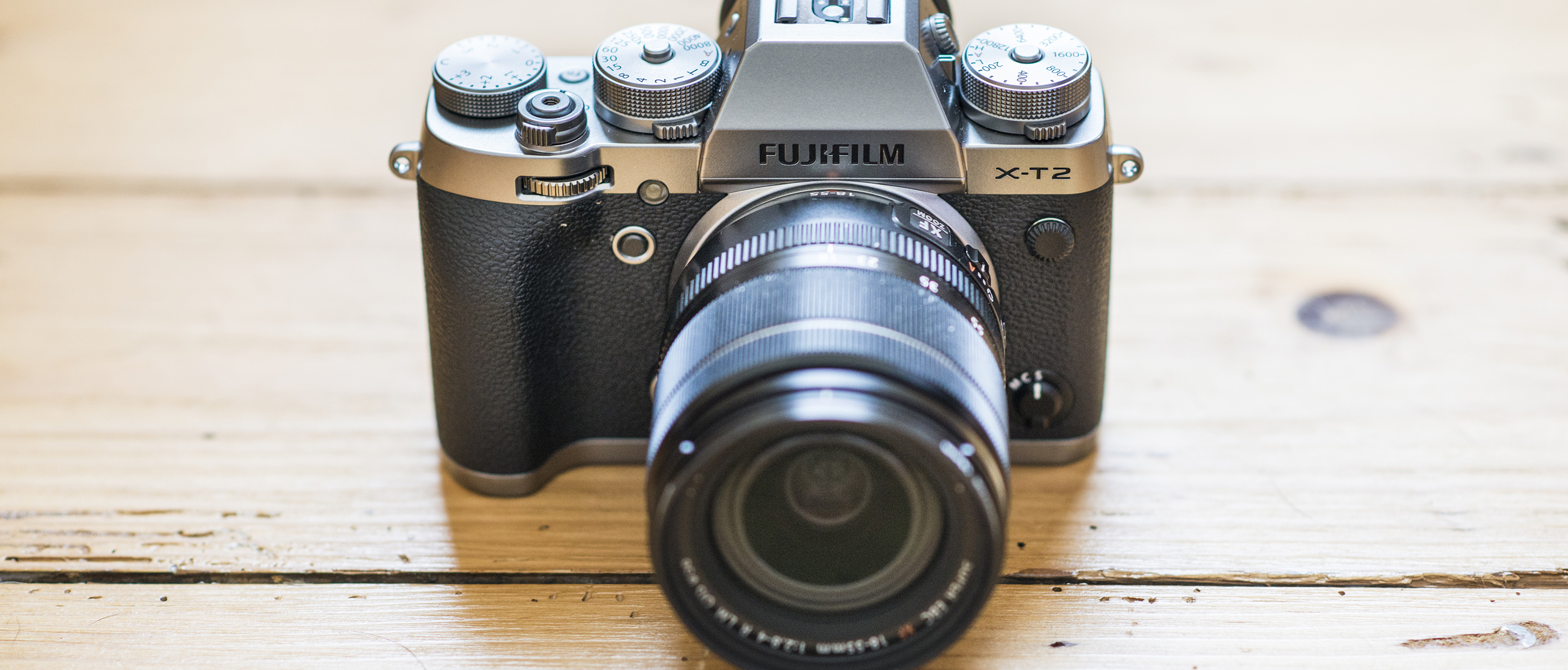Why you can trust TechRadar
Performance
- 8fps burst shooting (14fps with electronic shutter)
- Mechanical and electronic shutter
- 0.3sec start-up time
The unchanged TTL 256-zone metering system performs very well, especially when challenged by high contrast scenes, where if anything it tended to underexpose. This wasn't really an issue as this meant highlights could be recovered later on, while using face detection AF the metering would show a bias towards overexposing the shot for a more flattering high-key result. Because you can see the exposure in real-time on the EVF, it's possible to easily toggle the exposure compensation dial - especially if you have it set to 'C' and adjust via the front command dial.
The combination of this and the tilt-angle rear display make the X-T2 and pleasure to compose shots
Sticking with the viewfinder for a moment, and it's lovely and bright in use. The refresh rate delivers an incredibly clear display with plenty of shooting information available. The combination of this and the tilt-angle rear display make the X-T2 and pleasure to compose shots - the double hinged display a real benefit when shooting portrait-format images from low angles.
Moving onto the white balance and it copes very well in a range of environments, only really struggling when confronted with a mix of daylight and incandescent lighting, with the X-T2 opting for a slightly too warm result. There are plenty of presets to choose from too, while the Auto setting can be fine-tuned to your taste.
Raw files deliver very pleasing color, while those shooting in JPEG have Fuji's excellent set of Film Simulation modes on tap as well. Provia/Standard is the default option and a good choice for general shooting, while the likes of Velvia noticeable boost saturation and the Acros mono filter (and its yellow, red and green options) delivers some really nice results (see above) for those that like to shoot black and white. While it's hard to beat the depth of a processed raw file, pick the right film simulation mode with their unique mix of color, sharpening and contrast, and you can get some cracking results without the need to spend ages processing images later.
The burst rate is a decent 8fps, while put a decent SDHC UHS-II card in the X-T2 and you can expect to shoot a consecutive 27 uncompressed raw files at this rate before the buffer needs time to churn through the data, while if you're solely shooting JPEG files, 81 files are possible before it slows up.
If you're going to be using the additional battery grip, the burst rate increases to a fast 11fps, with it possible to capture the same amount of raw files as before, but this time at this faster rate. If you want to opt for the electronic shutter instead of the mechanical shutter, then it's possible to shoot at a burst rate of a very snappy 14fps without the need for the optional grip, and record 24 uncompressed raw files in doing so before the rate slows.
Image quality
- ISO200-12,800, expandable to 100-51,200
- Film simulation modes
- +/-5 EV exp. compensation in 1/3 or 1/2 stop increments
Given that the X-T2 uses the same 24.3MP CMOS sensor, results didn't really throw-up anything we weren't expecting, with a noticeable jump in detail recorded compared to results from the X-T1. The X-T2's X-Trans CMOS technology does an excellent job at resolving detail across the sensitivity range, especially when compared to APS-C rivals with a similar resolution.
Sign up for breaking news, reviews, opinion, top tech deals, and more.
While it may have one of the more conservative sensitivity ranges, the X-T2 does very well, with results at the lower end of the ISO range displaying exceptionally clean results - you'll have to look really closely for signs of luminance noise in flat, blocked-color areas that can sometimes be there.
It's only at around ISO3,200 and above that luminance noise starts to encroach on the image. That said, even at ISO12,800 it's possible to apply some noise reduction in post-processing to keep it under control and still walk away with a more than acceptable shot, though beyond that and you're looking at shooting at these sensitivities only as a last resort.
Dynamic range is very good at lower sensitivities, offering plenty of flexibility to recover detail in post-processing with raw files, while there's Fuji's owner Dynamic Range settings (both for JPEG and raw, though this does reduce the base sensitivity available). At higher ISO settings above ISO1,600, things tail off slightly, but are still more than acceptable up to ISO25,600.

Phil Hall is an experienced writer and editor having worked on some of the largest photography magazines in the UK, and now edit the photography channel of TechRadar, the UK's biggest tech website and one of the largest in the world. He has also worked on numerous commercial projects, including working with manufacturers like Nikon and Fujifilm on bespoke printed and online camera guides, as well as writing technique blogs and copy for the John Lewis Technology guide.




